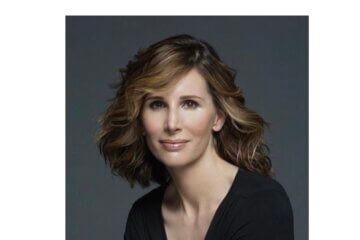
If you work for one of the 59%* of employers that offer a financial wellness program, congratulations! These programs can be the key to unlocking better budgeting habits, paying down debt, finding financial empowerment and, yes, saving and investing as much as possible for retirement. But are you truly getting the most out of your program?
For women, this is a particularly important question to answer. That’s because, according to The 2023 State of Women survey from HerMoney Media and Principal Financial Group®, men reported getting more out of their workplace financial wellness programs than women did. Men, more than women, said their employers’ financial wellness programs helped them increase their emergency savings (25% vs. 13%), reduce debt (21% vs. 9%), and improve their setting of financial goals (23% vs. 15%).
While it’s frustrating to uncover yet another gender gap, it can be bridged. Here’s a look at five ways to get the absolute most out of your employer’s financial wellness program so you can more confidently reach your financial goals, no matter where life takes you.
Embrace Your Own Timeline, But Know There’s No Time Like The Present
If you didn’t take steps to save for retirement right out of college, you’ve likely been frustrated by the oft-dispensed advice that “starting early is the best way to invest!” The truth is that very few of us snag our diplomas and run straight to open an IRA. Everyone’s financial journey is unique, and it’s okay to make progress on a different timeline than others.
“You’ve got to give yourself the space and grace you need,” says Stacy Miller, a certified financial planner based in Tampa, FL. “Women are often a bit slower to take action because they’re asking more questions — and because they’re balancing 50 million other things. We leave work, but we have kids; we’re moms, wives, and daughters with full-time responsibilities. So doing the additional research we need to do to feel confident with our finances is, by nature, going to take more time.” Also, the gender pay gap means that many of us don’t have as much in disposable assets to put to use.
That said, you can take the initial steps to get started ASAP, even if you only have a few minutes — or a few dollars — to spare. (Having competing priorities is one thing, but putting off that first step for months or even years isn’t an option!) If your employer offers a financial wellness program but you haven’t yet logged in or explored the platform, make time this week. Schedule it on your calendar to make sure it happens.
“You have to engage as soon as you can because, if you don’t, you could miss out on some really critical years,” explains Teresa Hassara, senior vice president of Workplace Savings and Retirement Solutions at Principal®. “If you find yourself divorced in your 50s or later and you’re still not confident with money, you could be in a bad place.”
Don’t Limit Your Financial Education — Expand It
Financial wellness programs are one of the best starting points for people to figure out what truly “works” for their financial situation, Miller says. “These programs can help you learn what you need and what feels good to you. Once you dive into it, you’ll see, ‘I like this, but I don’t like that,’ etc.,” she explains. “You can get a sense of what your goals are, what your risk tolerance is or where your knowledge may be lacking.”
But what about after you’ve immersed yourself in, say, one part of your program? From there, the ball is in your court. While financial wellness programs can be incredibly impactful, they aren’t going to offer you every single piece of information you’ll ever need to know about your financial life. Some programs are designed to lead you on a journey, but others require you to actively pick the elements that you need. This requires supplementing your knowledge to continue building money confidence.
“I curate my news feed so that I can find a variety of viewpoints on the content that matters most to me, that compliments what I’m already exploring,” Hassara says, adding that she loves combining her “physical and financial life” via informative and empowering podcasts. “If walking is your thing, if running is your thing, just put on a financial wellness podcast while you’re doing that,” she says. “You’ll be amazed how that can change your perspective.”
Everything, Everywhere, All At Once? Don’t Be Intimidated
The first time you log into the portal for your financial wellness program, you may see prompts to get on a budget, start a savings account, open a retirement account or a myriad of other things. “It can seem overwhelming,” says Tim Kirch, certified financial planner and owner at Nashville Financial Planning. “But start with baby steps. If your priority is opening a savings account, start there. Once you’ve completed that, then move onto the next step. Don’t look at the 50 things you want to complete, look at the one thing you’re doing right now.”
Also, while it’s always helpful to chat with your colleagues about the takeaways they’re gaining from the program, understand that your needs may look entirely different from theirs — and that’s okay. “You may have student debt, and you may not have been taught anything about financial literacy. Meanwhile, someone else may have been investing for years, but may not know how to manage credit card debt. Focus on your goals,” Kirch says.
Ask For More If You’re Not Getting It
Having financial stress in our lives has significant implications for our emotional and physical wellbeing, Hassara says. If you tap into your financial wellness program but still find that you don’t have a baseline understanding of what financial health means for you, it’s time to chat with your HR department or your financial wellness program provider.
“HR wants to help. They offer these programs because they are committed to their employees and want to understand their employees,” Hassara says. Meanwhile, your financial wellness program provider can help make the program work harder for you. “You can call and say, ‘Hey, I’m on this journey. What can you suggest to me?’ At Principal, we love those phone calls.”
Additionally, many employers may offer speakers or “lunch and learn” style presentations as part of their financial wellness offerings. If you find that you aren’t engaged with the speakers or simply want to hear something different, “advocate for your employer to choose a program, speaker, or presentation that will resonate with you — and with other women at your company,” Miller says. “If you don’t ask, you don’t get.”
Above All Else, Make Time
You could have the best financial wellness program in the world just a few clicks away, but if you aren’t using it, it’s worthless.
“Maybe finances aren’t your thing. Maybe you haven’t loved it in the past. But until you take the time to actually do something, you aren’t going to make any progress,” Kirch says.
Once you dive in and explore, give yourself a pat on the back — but know that it’s not enough to simply learn, you’ve also got to act. For example, if you take a debt repayment course but don’t implement those tactics and start repaying your own debt, then you haven’t really moved the needle in your financial life.
“Yes, there’s the understanding part of it, but what’s more important is how you apply it,” Kirch says. “You’ve got to learn as much as you can — then do as much as you can.”
*Principal® Well-Being Index, January 2023, surveying employers with 10,000 or less employees that offer health insurance and/or retirement benefits and self-report they offer an employee financial wellness program
Get a step-by-step guide for creating your own financial plan at principal.com.
This story was sponsored by Principal Financial Group®
About Principal Financial Group®
Principal Financial Group® is a global financial company focused on improving the wealth and well-being of people and businesses. In business for more than 140 years, Principal® helps customers plan, protect, invest, and retire, while working to support the communities where they do business, and build a diverse, inclusive workforce. Learn more about Principal at principal.com.







